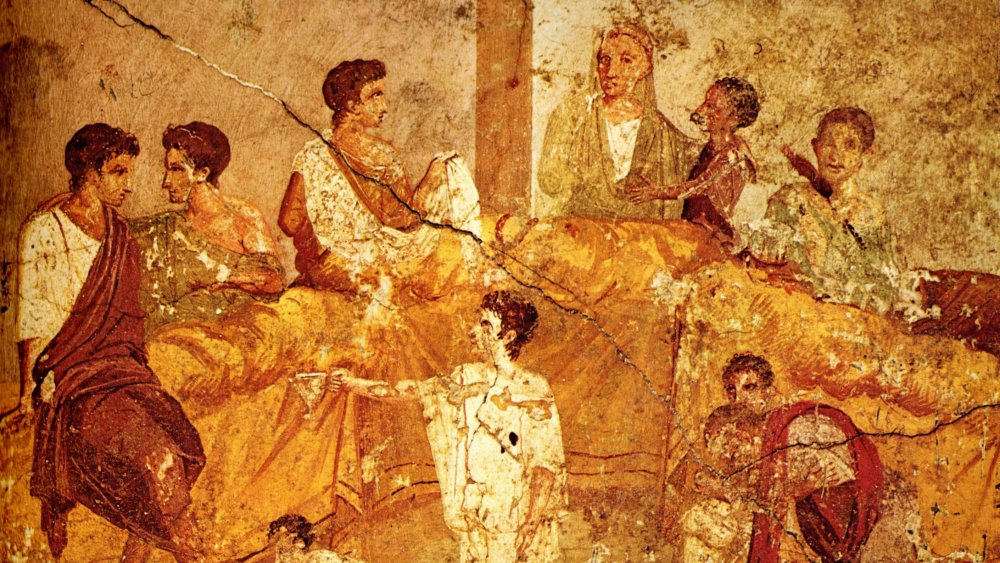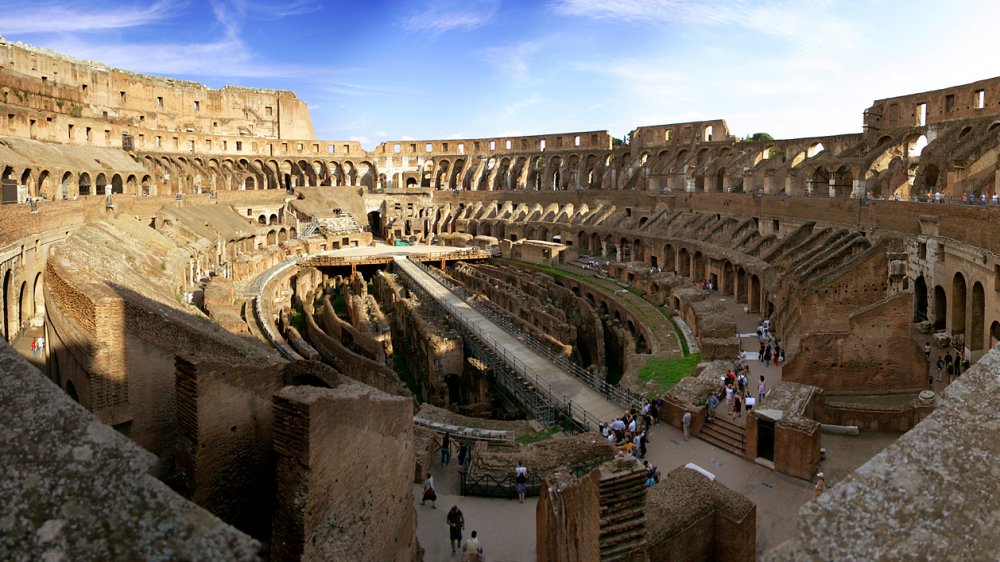Things The Ancient Romans Couldn't Live Without
When thinking of ancient peoples, it's easy to envision them and their lives as distinct and totally different from yours. But, of course, as described in Nature, biologically modern humans can be found as far back as 200,000 years ago, with the same minds, imagination, and drives. If, as the Smithsonian Magazine describes, ancient Pompei could be replete with standing fast food counters used for mid-day snacks (thermopalia), then why couldn't ancient Romans hang out in markets or malls such as the five-story Market of Trajan, named after the Roman emperor who ruled from 98-117 CE, when the empire was at its most stable height? The market was full of butchers, herbs and spices, oil, wine, and much more.
Shopping was just one facet of everyday life that ancient Romans couldn't go without. As History Crunch states, not only did the Romans have a love of fast food, they had a fully developed, highly cosmopolitan culture, particularly in Rome itself, capital of the empire, with a population of over a million. People worked, rested, chatted with friends, went to baths and gyms, watched some sports, did some shopping, and generally came to expect their society to provide them with certain, regular things. Of course, the poor had it hardest of all. They often couldn't even afford meat, and generally kept to the slums, which were crime-ridden enough for the police to completely avoid. The only thing they could reasonably expect was for their apartment building to collapse or catch fire.
Are you not entertained?
Top of the list of things that ancient Romans were rabid about (after fast food, it seems) was entertainment, particularly games at the Colosseum, per History Crunch. People didn't care that the Colosseum was deliberately built to mollify the masses: admission was free, and they had fun there. Games included gladiatorial fighting and chariot racing, but could also involve criminal executions, or reenactments of battles. Most often, gladiators fought against animals, although person-to-person battle was a fan favorite. Gladiators would stay penned in cages under the stands, out of sight of the public, until called on to die. Chariot racing, by contrast, was kind of like modern-day NASCAR, where charioteers were supported by teams of blacksmiths, trainers, carpenters, and even veterinarians. In both cases, the competitors were slaves or criminals, who could win their freedom by being successful.
Beyond such bloodsports, Romans made extensive use of public baths, as History Crunch describes. Much like ancient saunas in Finland, or onsen in Japan, Roman baths were social places where people convened on a near-daily basis to swim, hang out, and stay clean. Nearly every city and town had public baths. Romans followed a specific regiment of exercise, followed by scrubbing with oil (not soap), and then bathing in differently heated pools that included cool water, hot water, steam rooms, and open-air pools.
With all the working, shopping, eating, sports, and cleaning, it seems the Romans couldn't live without many of the same things as people today.

